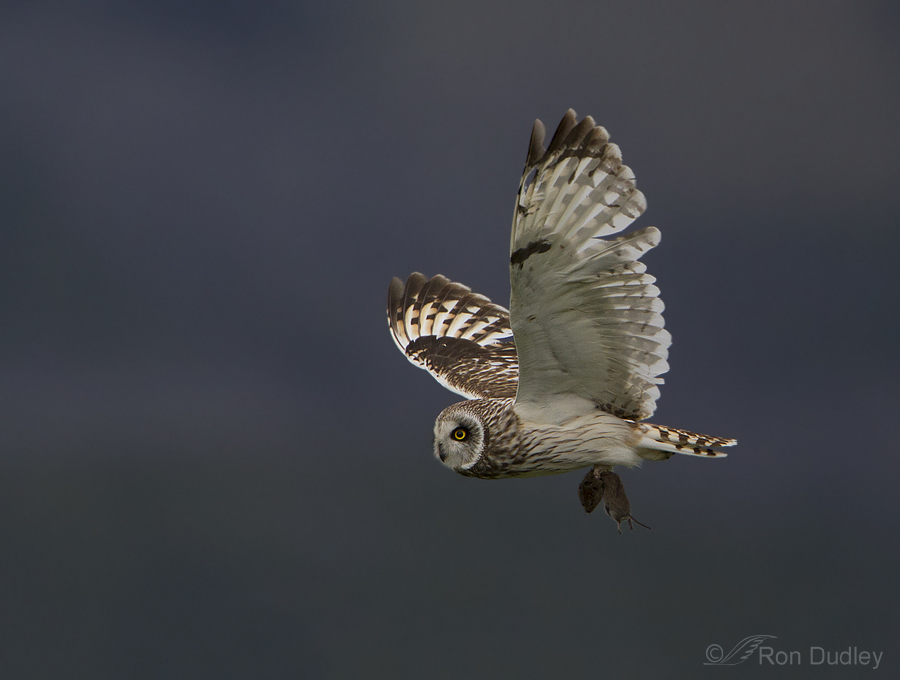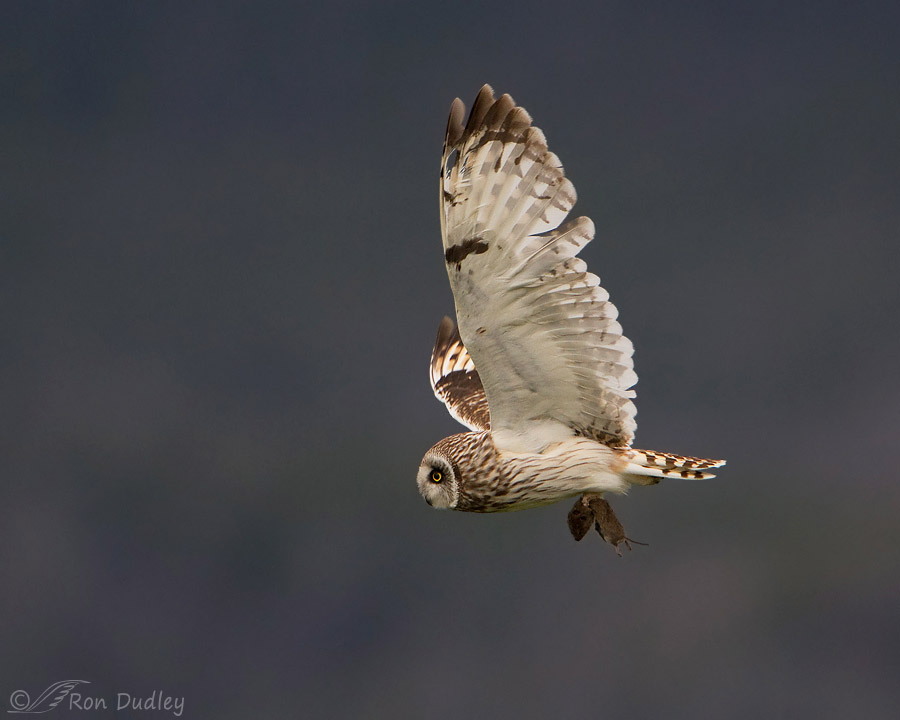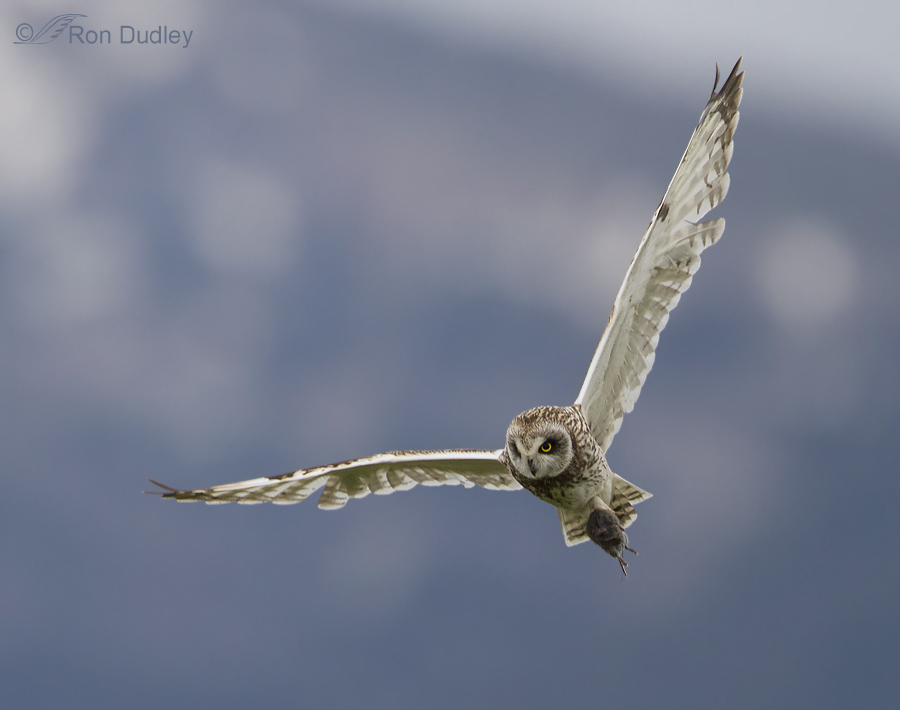Tag: centennial mountains
Short-eared Owl With Prey
The Interdependence Of Short-eared Owls And Voles

Though Short-eared Owls are one of the worlds most widespread owls, the species is highly dependent on the density of its small mammal prey, voles in particular. Since vole populations fluctuate wildly, Short-eared Owls show significant local variation in numbers and reproductive success from year to year.
Short-eared Owl With Prey, Coming At Me
I’m always happy when I can get decent images of an owl in flight. If they’re carrying prey it’s a bonus. And if the bird is flying toward me I often consider it icing on the cake – partly because those kinds of shots are so very often baited, decoyed, set up or called in. As always for me, these were not. I’ve posted one of these shots before but I hoped it might be interesting for some to see a sequence of images as this adult male Short-eared Owl flew toward me with a vole for its mate before veering off to my right. 1/1000, f/5.6, ISO 800, 500 f/4, 1.4 tc, natural light, not baited, set up or called in This first image shows less detail and image quality because the owl was further away as it began to approach me but I decided to include it for context in the sequence. The lower background is sagebrush flats while the upper blues are Montana’s Centennial Mountains in shade. 1/1250, f/5.6, ISO 800, 500 f/4, 1.4 tc, natural light, not baited, set up or called in Four frames later the owl was significantly closer and flew almost directly at me before veering off – a pattern it followed more than once. I’d guess that it was his way of checking me out for any potential threat before delivering the vole. 1/1000, f/5.6, ISO 800, 500 f/4, 1.4 tc, natural light, not baited, set up or called in Which he’s doing intently here. Eye contact can’t be much…
Just A Shot That I Like… #6 – Short-eared Owl In Flight With Prey
Sometimes conditions are marginal at best for avian photography and that often seems to be the case for me when I’m presented with an otherwise wonderful opportunity. Then the decision must be made – go ahead and shoot anyway, knowing it’s likely that I won’t get any keepers or just pack it in and watch and enjoy the birds? 1/640, f/5.6, ISO 800, 500 f/4, 1.4 tc, noise reduction to background Such was the case with this Short-eared Owl at Montana’s rugged and remote Centennial Valley. It was an overcast day and there generally wasn’t enough light for photographing birds in flight but this male was regularly delivering voles to his family and would occasionally fly right by me as he did so. I could have removed my teleconverter to get a little more shutter speed but then the owl would be quite small in the frame so I just decided to fire away and hope for the best. Even at ISO 800 (the absolute limit for my 7D without getting too much noise) I was often getting shutter speeds of 1/500 or slower at f/5.6 – just not fast enough to get birds in flight sharp. I got lucky with this shot. As the owl was coming in, the clouds behind me opened up slightly to allow a little more light on the bird and a shutter speed of 1/640 – just enough to get good sharpness on a relatively large and slow flying bird if your focus is well locked on to the subject. The still shaded Centennial Mountains provided…



